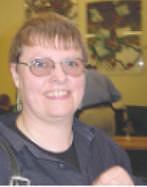Creative Coursebook | Reviews
edited by Julia Bell and Paul Magrsted
Macmillan 2001 392 pages
|
The Creative Writing Coursebook
‘help students to develop their skills, to search more deeply into their selves and their imaginations, to experiment and to diversify.’
'it really does feel as though you’re participating in a series of class discussions'
'Writers talk about their own approaches to particular aspects of the craft, and suggest exercises with which to explore their topics.'
'It is probably the best book on the business of writing that I’ve ever read.' |
The Creative Writing MA at the University of East Anglia is justly famous. Less well-known is the undergraduate version of the course, also part of the wider Creative Writing programme created thirty years ago at UEA by Malcolm Bradbury and Angus Wilson. Their aim in creating the programme was not to ensure fame and fortune for its participants (though this is always a welcome bonus) but to give students a chance to really concentrate on their work in a supportive atmosphere. As Andrew MotionEnglish poet, novelist and biographer; Poet Laureate of United Kingdom from 1999 to 2009; during his laureateship founded the Poetry Archive, an online resource of poems and audio recordings of poets reading their own work, the Poet Laureate, explains in his foreword, the courses are meant to ‘help students to develop their skills, to search more deeply into their selves and their imaginations, to experiment and to diversify.’ All of which sounds utterly marvellous if you’re sitting in the seminar room with Ms Well-known Author and a handful of other students, all of them focusing on your manuscript, but how can you achieve that effect if you’re somewhere else, perhaps working in less than ideal conditions? The Creative Writing Coursebook is an attempt to recreate at least part of the undergraduate course experience in book form. It won’t supply the wide-eyed, dry-mouthed panic as Sir Famous Poet sets to work on your magnum opus, but it certainly does make a determined effort to put as much of the rest of the experience on the page as it possibly can. Indeed, one of the most remarkable achievements of this book is that it really does feel as though you’re participating in a series of class discussions: the authors are there, offering advice, suggestions, thoughts on the nature of writing; they pick up ideas from one another, expand on them, explore them. The effect is quite uncanny. The Coursebook follows the structure of the undergraduate writing programme, but the undergraduate writing programme doesn’t follow the usual conventions of ‘how-to-write’ books. Instead, its structure is rather more subtle, flowing from the development of ideas to the creation of a piece in a way that is much more organic and more realistic. There are no neatly packaged gobbets of information on ‘finding ideas’, ‘characterisation, ‘dialogue’ or ‘plot’. Instead, the book is broken down into three main sections, ‘Gathering’, ‘Shaping’ and ‘Finishing’, reflecting the three main activities of any writer. You will find the ‘where do you get your ideas’ section in ‘Gathering’ and a long discussion of ‘characterisation’ in ‘Shaping’, but presented in such a way as to reflect the process of writing, rather than as individual ingredients in a recipe to produce the perfect, best-selling novel. Creative Writing classes at UEA are taught by writers, in the belief that they are probably those best qualified to talk about the matter, and this philosophy is reflected in the Coursebook. Writers talk about their own approaches to particular aspects of the craft, and suggest exercises with which to explore their topics. The emphasis of the contributors is on sharing their own experiences in the hope that this may help students, rather than laying down hard-and-fast rules for guaranteed success. At the same time, it is gently pointed out, more than once, that slavish imitation of these suggestions is probably not the best way forward. But all the writers stress that it’s up to the student to put in the work; the tutors can’t do it for you. This is almost certainly the most profound lesson offered in the Coursebook. It really is such an immense pleasure to read a book like this; even though I write non-fiction whereas the Coursebook focuses on fiction and poetry, I felt I learned a lot from it about the business of writing, and about how to look at other people’s work. It’s also a pleasure because this is such a writerly book, written by people who know what’s really important to a writer. They write about craft and technique, but they talk about the philosophy of writing too, and about their own motivations in writing. It’s this I find so inspiring, being able to see inside writers’ heads, however briefly, and fathom the mysteries of what they do, and realising that I’ve got the potential to do it too. In the book’s introduction, Julia Bell talks about the importance of being not a best-seller, but of being able to ‘generate and shape a successful piece of creative work’, something that will go on to give us pleasure throughout our lives. That is the strength of the writing course, and I think it’s the strength of this book too. It is so thoroughly imbued with a love of and respect for writing it is hard to believe that anyone could come away from the Coursebook not determined to produce something wonderful. It is probably the best book on the business of writing that I’ve ever read. |
© Maureen Kincaid Speller a reviewer, writer, editor and former librarian, is our book reviewer and also works for WritersServices as a freelance editor. 2002 a reviewer, writer, editor and former librarian, is our book reviewer and also works for WritersServices as a freelance editor. 2002 |
Reviewed by Maureen Kincaid Speller |
Related Items in our Amazon Store
|
List price: £14.99
Publisher: Macmillan
2001-08-10
Paperback
Sales rank: 6,081
|

